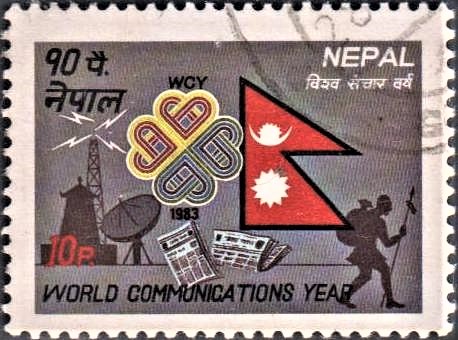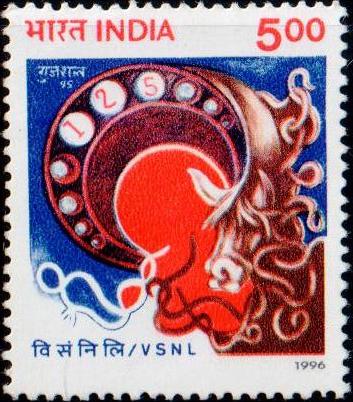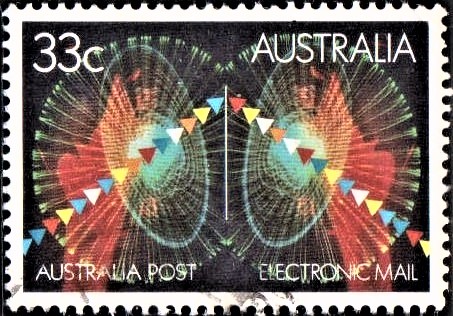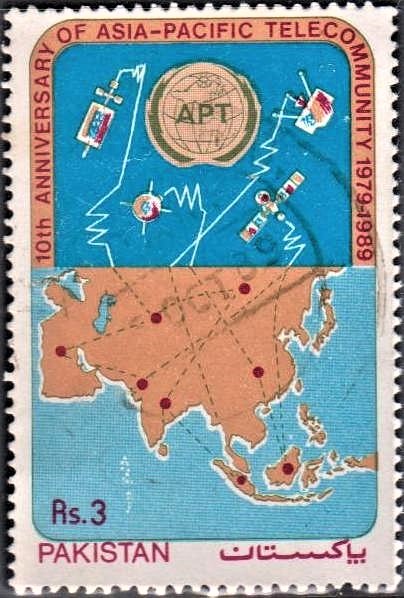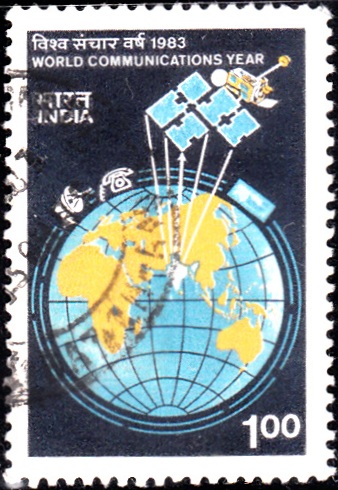
India on World Communications Year 1983
A commemorative postage stamp on the World Communication Year 1983, proclaimed by United Nations General Assembly in 1981 :
Issued on Jul 18, 1983
Issued for : The Indian Posts & Telegraphs Department is happy to issue a special postage stamp to commemorate the ‘World Communications Year’.
Description of Designs : The stamp and the First Day Cover have been designed by M. Mondal. The First Day Cover shows the logo of the ‘World Communication Year’. The cancellation has been designed by Charanjit Lal.
Type : Stamp, Postal Used
Colour : Multicolor
Denomination : 100 Paise
Overall size : 4.06 x 2.73 cms.
Printing size : 3.71 x 2.38 cms.
Perforation : 13 x 13
Paper : Unwatermarked adhesive stamp paper
Number printed : 15,00,000
Number per issue sheet : 40
Printing process : Photogravure
Printed at : India Security Press
About :
- The United Nations General Assembly, during its 36th Session held in November 1981, proclaimed the year 1983 as the ‘World Communications Year‘. This was done in recognition of the fundamental importance of communication infrastructure as an essential element in the economic and social development of all countries. The main objectives of the ‘World Communications Year’ are:–
- (i) to provide opportunity for all the countries to undertake an in-depth review and analysis of their policies on communications development, and
- (ii) to stimulate the accelerated development of communications Infrastructure.
- The United Nations envisages the ‘World Communications Year’ as the “beginning of a new era where every nation will be in a position to benefit from the services provided by equitable and harmoniously developed communication infrastructure“.
- The Postal and Tele-communications networks are major constituents of the communication infrastructure and have shown a steady growth at both national and international levels.
- Today postal services reach the doorsteps of the common man, even in remote, isolated, hilly, desert and inaccessible areas. By the end of the year 1982, the country had 1,42,955 post offices, the majority of them being in rural areas. The postal services handle more than one thousand crore pieces of mail articles per year. Advantage has been taken of scientific and technological developments in this field. The Railway Mail Service rationalised and electronic introduced is being sorting introduced.
- Pilot projects have been undertaken to improve rural communication system by installing fully automated secondary area network and long distance telephones, induction of electronic switching system, digital electronic exchanges and containerized electronic exchanges. Improvement is also being made in the working of coast stations and long distance satellite communication system. In the international trunk service, Gateway Switching Systems have been commissioned at Bombay, New Delhi and Madras, as a result of which direct subscriber dialling will become available to a large number of countries in the near future.
- There has also been a rapid growth in both sound and television broadcasting services, an equally important ingredient of tele-communications in its wider sense. Captive communication support for public utilities and private needs, mainly employing wireless medium, has also shown significant growth.
- India actively participated in all the programmes connected with the ‘World Communications Year’. During this year postal and tele-communication services and being geared to serve the people in a better way and to develop worldwide communications.




